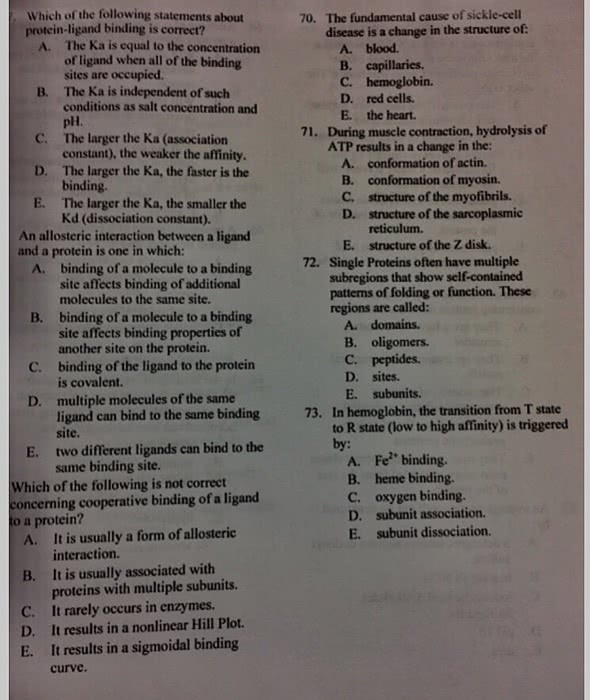BCH 2333 Lecture Notes - Lecture 12: Heme, Hemoglobin, Conformational Change
Document Summary
Linearized: n = 1 non cooperative n > 1 cooperativity n < 1 negative cooperativity. ** see notes for plots on cooperativity, and other ways to visualize cooperativity ** Hemoglobin = quaternary structure n = 2. 8, shows cooperativity. Heme groups have iron, which has a great affinity for oxygen. The oxygen is binding to the fe. Low affinity state = t state (tense) High affinity state = r state (released) Binding of a ligand modifying the function of a protein = allosteric interaction. Altered binding in r and t state. Models to explain altered binding in r and t state. Protein can exist in 2 states which are in equilibrium. Subunits of multimeric proteins have 2 conformational states. Ligand binding causes a conformational change induced fit binding. Conformational change of one subunit decreases the energy for conformational change in other subunits. There is sequential change, each subunit from the low affinity state to the high affinity state.



